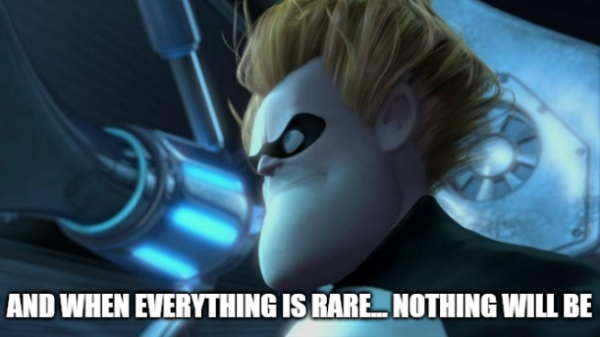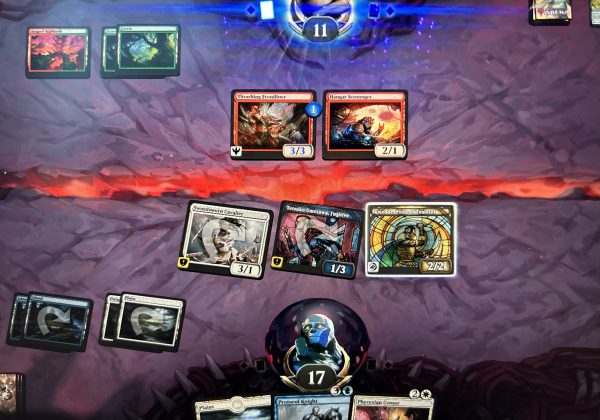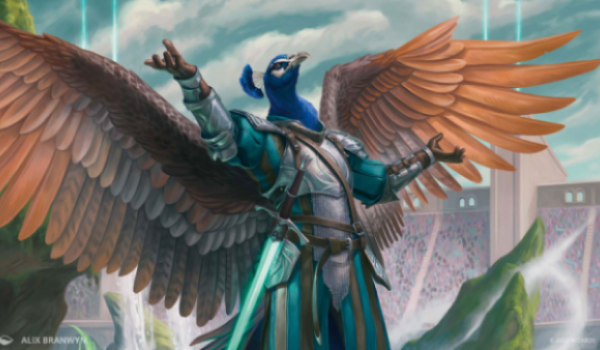Are you a Quiet Speculation member?
If not, now is a perfect time to join up! Our powerful tools, breaking-news analysis, and exclusive Discord channel will make sure you stay up to date and ahead of the curve.
When opening a pack, we always hope for the busted rare. This format provides that surge of joy more often than most. March of the Machine (MOM) approaches the "Prince Format" problem, wherein lucky openers of great rares are significantly favored even against skilled drafters, by offering more opportunities for these exclusive pulls. Sheoldred, Whispering One and Invasion of Innistrad // Deluge of the Dead can join a third potent rare in the same pack!

So yes, rares have an outsized impact on the format. That being said, this is still Limited, and as always, Limited gameplay is defined by commons. There are many good commons in the format, but two stand above the rest. Today, we'll consider the commons of MOM and how to leverage that knowledge into more trophies.
1A and 1B: Preening Champion vs. Deadly Derision
Preening Champion has the highest GIH WR% of all commons, while Deadly Derision boasts the top IWD. These are the format's best two commons.
In one corner, we have an above-rate creature. Preening Champion is a Wind Drake with meaningful types that brings along a token to further enable convoke. This card plays well in any blue deck, and has archetypal synergies with blue's two strongest identities. Additionally, it puts us in the best color. While MOM's top color might be contested, blue's deep assortment of commons lets it support multiple drafters.
In the other corner we have... a removal spell. And while I'm embarrassed to admit it, I'm picking the removal spell.
In most formats, I would consider such a decision disgraceful. However, removal spells are just too important in MOM. While blue has a lot of tools for dealing with creatures, most lack the permanence and versatility of this point-and-click answer. Temporal Cleansing and Ephara's Dispersal don't always get the job done. But instant-speed kill anything plus a treasure is one of the safest effects we can include. In a world where every deck has a Chrome Host Seedshark, Boon-Bringer Valkyrie, or Vorinclex, we simply cannot be caught without an answer.
Other Commons to Consider for Pick 1
To be fair, it is disappointing to start a draft with one of these cards. Commons are never the flashiest first picks. Still, these cards are solid, and can help us build a strong deck. They boast flexibility within their colors and power within the format.
Ephara's Dispersal is still underrated. It has the second-best GIH WR% and is a big contributor to blue's stranglehold on the format. We've talked about the importance of tempo-positive interaction in this article basically every week, so I'll spare you the lecture.
While we should want to be blue, we shouldn't sacrifice power level to do so. Open colors will offer us more than the best color in a vacuum. Blue provides strong commons, but if the color isn't open, we won't see the many potent difference-makers. It's similar to red in All Will Be One (ONE) in being so deep at common that we can pair it with anything and get a good deck. The difference is that in ONE, aggro chased away the bombs. In MOM, we want to position ourselves to draft bombs.
Red gives us the option to zig while the meta zags, and Volcanic Spite is a common we should consider as an "on ramp" to the color. Cheap interaction and filtering with the potential to flip a battle is an incredible amount of versatility for a two-mana instant. Once we're in red, this card moves up our pick order rapidly, but in a soft pack one, I'm not heartbroken to walk away with the better Fire Prophecy.
Pest is a jack of all trades, but a master of none. Early on it smooths out land drops, while in the midgame, the ability to dig for a battles provides potent versatility. This card facilitates a green-based multi-color deck, and is often searching up Sultai-flavored battles to pull ahead of our opponents. We should move flip cards up our pick order once we secure a couple of pests.
A Common Cause
Synergy matters a great deal in this format, and while we'd like to start that synergy with a card of higher rarity, doing so is not always an option. Once we commit to a path, an on-plan common will outperform an off-plan rare. Occasionally, we're so enchanted by speculation, we cast discipline to the wind.
In modern limited designs, we see a lot of reskinned effects in new environments. This can cause us to ignore them. We should instead reconsider how they perform in this meta and in our deck. The following cards play well in their archetypes and are easily overlooked. Don't be sure that they'll table. If we need them, we should take them.
It's always a blessing to be in an open color. This is especially true when we can position ourselves to snipe a higher concentration of rares than the average set might hold. Playing multi-colored bomb-soup is a reasonable way to ensure we have access to that plan, which is especially well-supported in green. If we sense ourselves being pulled in this direction, we still want to make sure we're disciplined... even while embarking on the greediest path archetype. That means prioritizing Blighted Burgeoning.
While it's not as powerful as Invasion of Zendikar // Awakened Skyclave, it's a fixer that ramps at common. The card boasts a 2.5 point improvement when drawn, and is typically picked around pick five or six. It's very good in the decks that want it.
Portent Tracker pairs nicely with this aura. Generating seven mana on turn four can create a game-warping advantage if we're able to capitalize. Additionally, Phyrexian synergies are in four of the five colors. These two cards let us cast our spells while leaving mana to flip over our Incubators.
UW Knights is the premier aggro deck in the format, and its best play on turn two is Swordsworn Cavalier. It might be the most important common in UW Knights. With first strike activated, it's basically unblockable until the mid-game. Additionally, it has very powerful interactions with some of the Multiverse Legends.

Knights decks seeking early plays shouldn't wait to grab Swordsworn Cavalier. In UW Knights, this card has the second-highest Opening Hand Win Rate amongst commons (a scintillating 61.7%), second only to Preening Champion.
When we're in UW Knights, we might be tempted by Realmbreaker's Grasp, Phyrexian Censor, or even a rare like Gyruda, Doom of Depths, but be cautious. Swordsworn Cavalier is important for the archetype and should be selected as such.
While UW Knights wants to take an aggressive role, wars of attrition are more often the deciding factor in this format. As a result, Unseal the Necropolis is a powerful tool. It's going slightly before pick seven, so don't expect to see these on the wheel. If we know we need one, and we see it early, it might be time to bite the bullet. These double-Raise Dead effects can serve as strategy lynchpins. It would be a real shame if we missed out because we got greedy.
This card gains value for each bomb we can recover with it. It can create powerful loops with Halo-Charged Skaab. Most importantly, it helps us power through the mid-game while accelerating us toward an ending. The symmetrical mill and instant speed are huge additions to a generally powerful effect. Even getting back a pedestrian pair like Converter Beast and Nezumi Informant to nab a mysterious card from an opponent's hand can feel strong. We don't have to work hard to make this card a two-for-one, and with rares, it can feel much better than that.
Conversely, if we've already secured a couple of these effects, cards like Eyes of Gitaxias and Gift of Compleation should move down in our pick order accordingly. This card plays well with cards that are actually creatures, not just effects that create them. If we're building our decks poorly, we might find ourselves waiting for a second creature to die or hoping to spike one on the mill. That's the fail state for this card, but it's easily avoidable if we draft with it in mind.
March Onward!
This is a format of haymakers. Powerful rares and mythics sometimes dominate games, but timely removal spells and well-built decks can also balance the playing field. Synergies exist at the archetype level, but also within smaller deck-building decisions. By building our decks in a cohesive manner, and knowing the commons that facilitate our plan, we put ourselves in a position to win consistently. Even when we don't draw our game-breaking rares.
Every time I venture back into this format, I feel like I'm discovering new synergies. Sometimes I'm eking out value with Nezumi Informant, and other times Halo Hopper snowballs into powerful convoke spells. Many of the overlooked cards can thrive in the right deck, which creates depth in an already beloved format. So don't be afraid to pick a card if you think it will work in your deck. You might just be a trailblazer, and there's no edge sharper than a fresh one.




